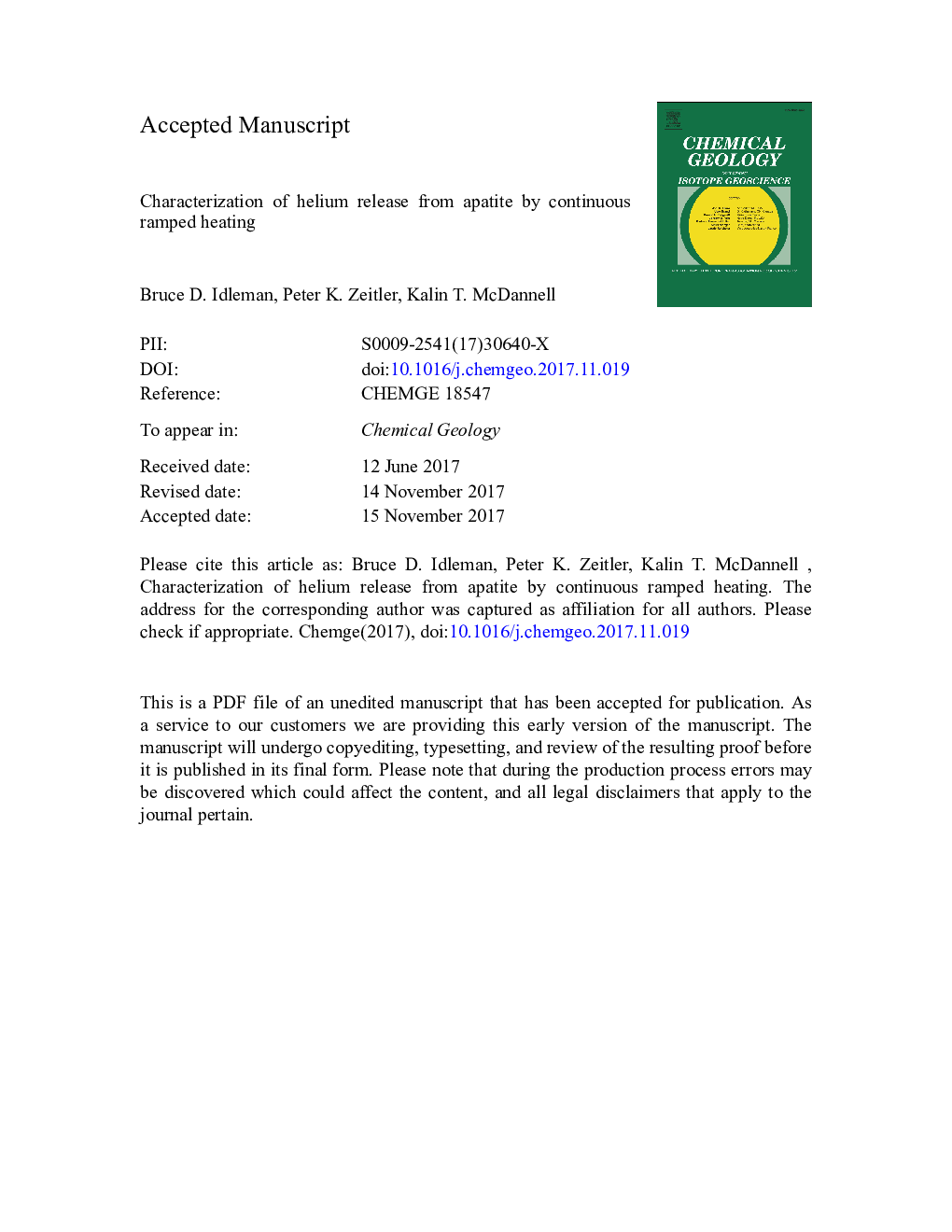| Article ID | Journal | Published Year | Pages | File Type |
|---|---|---|---|---|
| 8910461 | Chemical Geology | 2018 | 38 Pages |
Abstract
Knowledge of the kinetic behavior of He in apatite and other U- and Th-bearing minerals comes largely from detailed step-heating experiments, yet such experiments are time consuming and are rarely performed during routine thermochronological studies using the U-Th/He method. We propose a new analytical method for measuring both the bulk 4He abundance and the kinetics of He release in apatite. Using this method He is extracted from samples by continuous heating using a ramped temperature schedule under static vacuum conditions, and the evolved He is measured periodically as it accumulates in the extraction system. Continuous ramped heating (CRH) experiments can be conducted using instrumentation available in most noble-gas thermochronology labs but require particular attention to temperature control, measurement linearity and dynamic range, and suppression of active gases co-evolved with He. CRH experiments require little more time than conventional single-step heating measurements but yield a detailed record of He release not provided by conventional methods. Kinetic parameters for He diffusion in Durango apatite derived from continuous heating data agree well with those obtained from published step-heating studies. The continuous record of He release obtained from CRH experiments also provides important information about the siting of He and the presence of multiple He components in apatite, some of which may be responsible for anomalous U-Th/He ages and high age dispersion. As such the CRH method shows promise as a useful sample screening tool for apatite U-Th/He thermochronology.
Related Topics
Physical Sciences and Engineering
Earth and Planetary Sciences
Geochemistry and Petrology
Authors
Bruce D. Idleman, Peter K. Zeitler, Kalin T. McDannell,
